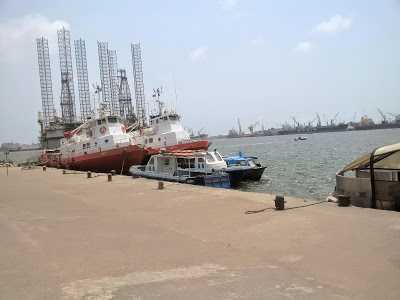Inland waterways transportation: Creating efficient regulatory systems for optimal economic benefits
Lately, industry
watchers and analysts have argued that Nigeria could make economic fortunes
from inland waterways transportation just like America, with an efficient
control system established to enable the Nigeria Inland Waterways Authority
(NIWA) function appropriately.
The
American Inland, intra-coastal and coastal waterways and channels for example,
stretch to about 25,000 miles. Out of this, 12,000 miles have been
commercialised and maintained by the government.
Available
statistics reveals that the U.S makes a whopping 8 billion USD annually from
this transportation sub-sector which at present accommodates about 3,008
businesses and 24,908 employees.
More than
60 per cent of America’s grain exports, about 22% of domestic petroleum
products and 20% of the coal used in electricity generation is ferried via
America’s water transportation system.
The case
is not same in Nigeria. For years, the growth of the water transport and other
ancillary businesses has been impeded by a battle for control.
Virtually
all state governments with this geographical advantage are engaged in some kind
of supremacy battle with the Federal Government, thereby flouting the dictates
of the law, the court rulings and causing distraction.
It would
be recalled that the Federal High Court sitting in Lagos on March 28, 2014
ruled that only the Federal Government was constitutionally empowered to
regulate operations of the inland waterways.
The
federal government in that vein carries out the function through the Nigerian
Inland Waterways Authority(NIWA) and the Nigerian Maritime Administration and
Safety Agency (NIMASA.
Justice
J.T Tsoho on the said date ruled that States and Federal Governments could not
have concurrent jurisdiction to make laws on the matter.
He said
that the inland waterways, by virtue of being on the Exclusive Legislative
list, were the Federal Government’s preserve.
Operators
had filed a suit against Lagos State and Federal Government together with their
agencies because of multiple taxes they were compelled to pay.
To get
operational permits or certificates, dredging companies, boat/ferry service
providers and jetty operators were (and in many cases are still being) levied
by both parties.
On a
closer look, the payments served the same purpose and were just duplicates. As
a result, operators begged the court to establish the proper and lawful agency
or agencies to deal with.
NIWA has
its guidelines for operators, just as Lagos State Waterways Authority (LASWA).
So, what happens at points of conflict in the regulatory duties of both
agencies? Who should be held responsible?
While one
body approves of the activities of operators, the other can halt their work for
whatsoever reason it deems fit. Of course, either way, the investor bears the
brunt.
LASWA on
behalf of Lagos State issues the same permits that the court empowered NIWA to
make available to operators on behalf of Federal Government.
While
operators are compelled to comply, industry analysts say that state governments
who venture into this area are merely driven by a quest for revenue generation,
putting off investors who could develop the sector.
Establishing
that licencing and monitoring of inland waterway operations is the Federal
Government’s constitutional preserve; the court also restrained LASWA and the
Honourable Commissioner, Ministry of Waterfront Infrastructural Development.
They were
not to control commercial activities of the plaintiffs- Association of Tourist
Boat Operators and Water Transporters of Nigeria and Dredgers Association of
Nigeria, while payments to them were declared illegal.
Giving
the judgment however, creating efficient systems for inland waterways transport
becomes a duty the Federal Government through the Ministry of Transport and
NIWA.
Water
transport in many developed countries is the most efficient and most
cost-effective means of moving both passengers and cargoes. It is also a great
revenue earner for many growing economies.
Nigeria’s
inland waterways cover approximately 8,600km, that is, about 5343.792 miles.
This natural geographical endowment remains largely under developed even though
it has capacity to generate much revenue if harnessed.
The
battle for control, has however, seems to have relegated burning issues to the
background as there have records of incessant mishaps leading to human and
business causalities.
The
inland waterways are overtaken by siltation and wrecks and only a small
fraction of the water is charted, while rickety crafts ply the waters unchecked.
How well
trained are people we parade as coastguards? How fast do we respond to
emergencies? We have not engaged yacht and small crafts surveyors! How much
have we really earned as revenue?
State
governments should begin to make progressive collaborative efforts, partnering
with the Ministry of Transport or NIWA to exploit the immense opportunities in
inland waterways as a better option.
They may
engage the Federal Government to see how they can participate in developing the
sector and what percentage of the revenue from inland waterways they could get
in return.
On the
other hand, the banning of dredging operations by Lagos State amidst the
dwindling national economy is ill-advised
.
While it
is agreed that there is need to sanitise and give structure to the sector, the
provisions of the law should also be followed.
NIWA
should be allowed to do its job, to encourage investments that could create
more jobs and give huge revenue to the government.

